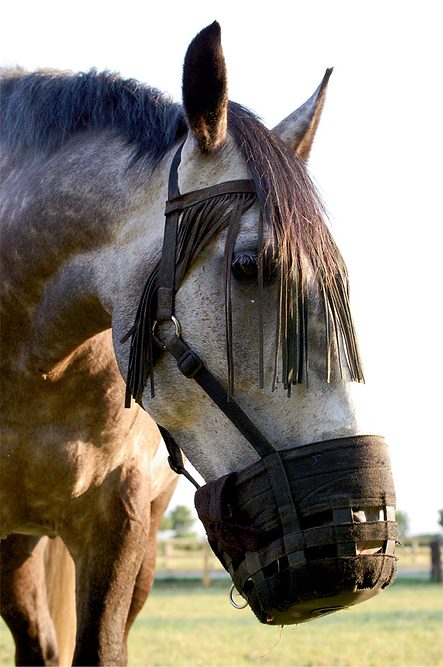American Farriers Journal
American Farriers Journal is the “hands-on” magazine for professional farriers, equine veterinarians and horse care product and service buyers.

Grazing muzzles are designed to reduce calorie intake. They can be effective in helping to manage horses prone to metabolic laminitis.
The metabolism of a horse is quite complex, but were learning more about it all the time, including what hormones affect metabolism in such a way as to cause laminitis. Happily, many cases of metabolic laminitis — those due to equine metabolic syndrome (EMS) or equine Cushing’s disease (ECD) — can be prevented or managed to improve soundness through diet, exercise, and medication (to say nothing of good footcare).
From the fourth International Equine Conference on Laminitis and Diseases of the Foot, held Nov. 2 to 4 in West Palm Beach, Fla., here’s what your horse-owning clients need to know about what they can do to prevent metabolic laminitis, and/or optimally manage already affected horses for soundness.
“Endocrinopathic (hormone-mediated) laminitis associated with equine Cushing’s disease and equine metabolic syndrome are commonly seen, and I think were seeing it more than we used to,” said Don Walsh, a veterinarian with Homestead Equine Hospital in Missouri and founder of the Animal Health Foundation. “It’s important that we can recognize these diseases and differentiate between them because the treatment is different.”
Walsh reported on a field study evaluating hormone levels in 25 horses and ponies over a 2 1/2- year period. Many of these equids had ECD or EMS and a current laminitis or a history of laminitis. During the study, all EMS horses developed laminitis at…